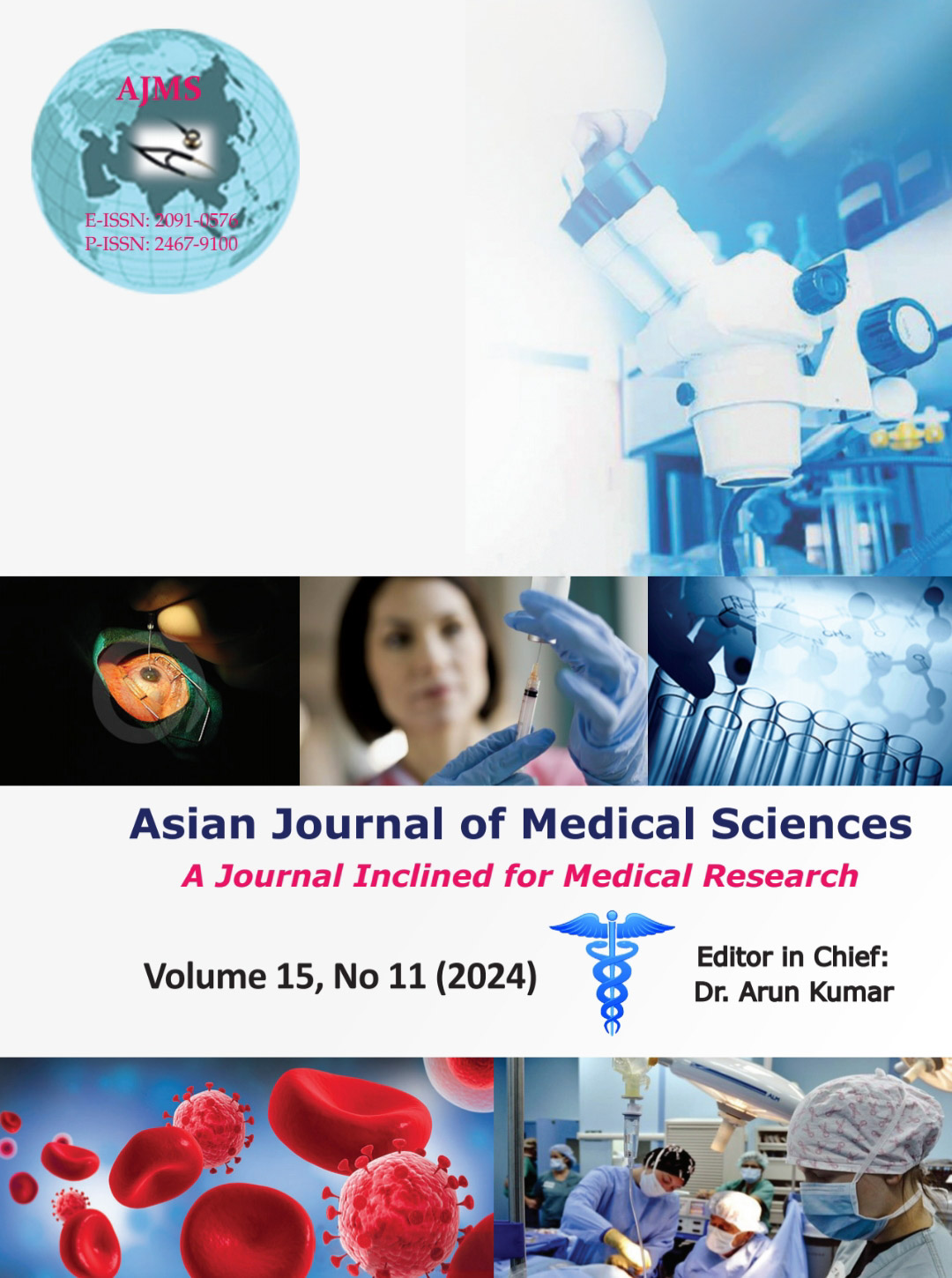Relation of low back pain with lumbosacral transitional vertebrae in Eastern Indian population
Keywords:
Lumbosacral transitional vertebrae; Lumbarization; Sacralization; Bertolotti syndrome; Low back pain; RadiographAbstract
Background: Lumbosacral transitional vertebrae (LSTV) or lumbarization of sacral vertebrae and sacralization of lumbar vertebrae are congenital variations. These are associated with alterations in anatomy and biomechanics of spinal and paraspinal structures, which lead to low back pain (LBP).
Aims and Objectives: This radiological study was designed to identify the prevalence of LSTV in patients presenting with LBP and to classify the anatomical variations in LSTV according to the Castellvi classification.
Materials and Methods: This hospital-based, cross-sectional, observational cohort study was conducted in the Department of Radiodiagnosis, in different medical colleges and hospitals of West Bengal. The study was done on 1500 patients aged 20–75 years with a history of LBP. Antero-posterior and lateral lumbosacral radiographs were done to identify LSTV.
Results: The present study in West Bengal shows that 24.1% of subjects had LSTV among LBP patients, Castellvi Type IIA (33.4%) being the most common anatomical variant, followed by Type IB (19.6%). Sacralization (22.3%) was found more common than lumbarization (1.8%).
Conclusion: LSTV comprises almost one-fourth of cases of low back ache which can be easily diagnosed by simple radiograph. It has important implications for surgery in the lumbosacral region.
Downloads
Downloads
Published
How to Cite
Issue
Section
License
Copyright (c) 2024 Asian Journal of Medical Sciences

This work is licensed under a Creative Commons Attribution-NonCommercial 4.0 International License.
Authors who publish with this journal agree to the following terms:
- The journal holds copyright and publishes the work under a Creative Commons CC-BY-NC license that permits use, distribution and reprduction in any medium, provided the original work is properly cited and is not used for commercial purposes. The journal should be recognised as the original publisher of this work.
- Authors are able to enter into separate, additional contractual arrangements for the non-exclusive distribution of the journal's published version of the work (e.g., post it to an institutional repository or publish it in a book), with an acknowledgement of its initial publication in this journal.
- Authors are permitted and encouraged to post their work online (e.g., in institutional repositories or on their website) prior to and during the submission process, as it can lead to productive exchanges, as well as earlier and greater citation of published work (See The Effect of Open Access).




